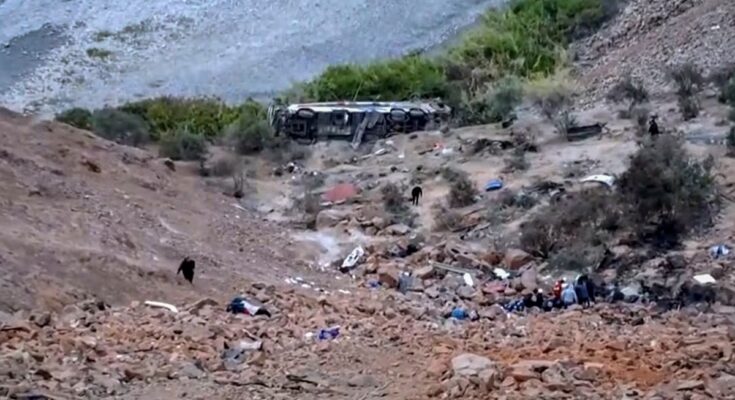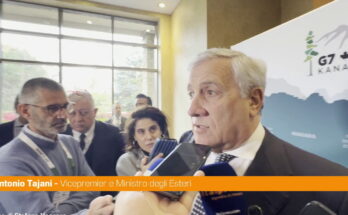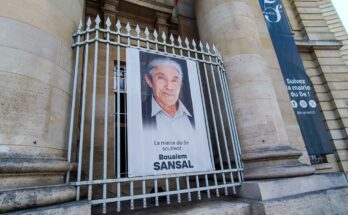In the early hours of this Wednesday, a bus plunged into a 200-meter abyss in the Arequipa region on the southern coast of Peru. The Llamosas company vehicle collided with a truck near the Ocoña sector, in the province of Camaná, exactly at kilometer 780 of the Panamerican South. The impact was deadly: at least 37 dead and around 25 injured, with multiple bruises.
Among the survivors are an eight-month-old and a four-year-old. The bus had left the previous night from the town of Chala, in the far north of the region, and was headed towards the capital Arequipa. On board there were mainly citizens from the province of Caravelí who were going to work. The main hypothesis is that the driver lost control on a stretch of sharp bends.
This is one of the most serious accidents of the year on Peruvian roads, which tend to be stained with blood on a recurring basis. According to the Death Information System (Sinadef), 2,492 deaths due to road accidents have been recorded in the country to date. It is the leading cause of death in Peru after murders (1,923) and other types of accidents.
This is an alarming figure that is on track to surpass previous years. In 2023, 1,796 deaths were reported on national circuits, while in 2024 the victims rose to 2,571. Carelessness, poor road safety education, rugged geography, the state of the roads and even the lack of signs are the causes of a serious problem that monopolizes the news every day.
The mayor of the Ocoña district, Waldor Llerena, acknowledged that the place where the accident occurred is a difficult maneuvering area where even last year another bus could have gotten lost. Naturally, he assured that the stretch in question was signposted and equipped with safety stripes, which is why he believes an investigation is necessary to determine the causes of the tragedy.
“The signage, yes, it has its railing, it has its signage. But sometimes, due to weight, excessive speed, even a little recklessness, sometimes these accidents happen and, unfortunately, that’s what happened,” Waldor Llerena told Radio Programas del Perú. “There have been many deaths on this Pan-American highway,” he lamented.
The 25 injured are recovering in health centers in the area. Some were referred to the Honorio Delgado Regional Hospital. Meanwhile, the south-north lane of the Panamericana Sur remained closed for several hours to carry out rescue operations. This event comes at the beginning of a three-month trip that President José Jerí will make to coastal, mountainous and jungle regions to listen to the needs of the population.



